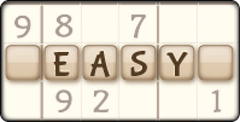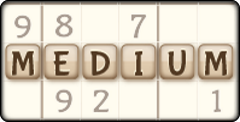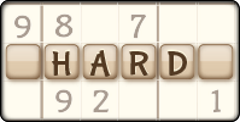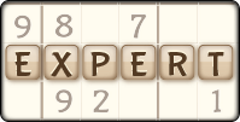Intermediate Sudoku Techniques: Boost Your Puzzle Solving Skills
Intermediate Sudoku puzzles provide a fantastic challenge for adept players. Unlike simple Sudoku challenges with a high proportion of ready-filled grid squares, these more complex games have limited pre-filled spaces. This makes it far harder to recognize the right placements and typically requires a player’s advanced understanding of certain Sudoku techniques.
In this article, we’ll consider key Sudoku techniques that could help you handle intermediate puzzles with ease.

Intermediate Techniques Overview
The overall aim of Sudoku is simple - you want to fill each grid element with the numbers 1-9 without repeats.
Achieving this within intermediate puzzles with limited filled squares requires advanced techniques that ensure you can easily handle even the sparsest grids with speed and accuracy. There are a number of techniques to consider, and you should apply as many of them as possible to each intermediate game you play.
Advanced Pencil Marks Strategies
Pencil marks are a key strategy for Sudoku play of all levels, and their importance only increases on an intermediate board.
Making pencil marks means writing down every potential number candidate for an empty square in that square’s top corner. At a simple level, this can help you to visualize your board and spot obvious patterns.
While they broadly serve the same purpose, advanced pencil mark strategies span far more complex patterns. Many Intermediate players therefore adopt techniques to simplify their pencil mark process, such as ranking their candidates to narrow down on the right number.
Recognizing Complex Patterns
Simple patterns like naked singles can help even beginner players write the first numbers on their grids, but singles are pretty much nonexistent on sparse intermediate grids. In this case, players will need to recognize more complex patterns to begin solving the puzzle, such as –
- Unique rectangles: Unique rectangles (UR) are groups of four cells that occupy exactly two rows, two columns, and two boxes, and each has the same two candidates in contention.
- The corner pattern: Corner patterns are four solved squares bunched into the corner of a box.
- The gate pattern: Gate patterns exist when there are two cells in a box in the same row or column, but a third empty cell.
Patterns like these can be useful for solving different elements of your puzzle and narrowing down candidates in some cases.
Utilizing XY-Wing and XYZ-Wing
XY-wings are groups of three cells that each have only two candidates. One of these cells must share a unit with the other two, and these become the ‘wings’. Each of these wings must also share one candidate with the first cell but of different values. These patterns are difficult to find, but if the second candidates in the wings are both the same, and they both share a unit with a common candidate in a fourth cell, then you can eliminate that candidate.
XYZ-wing is an extension of this technique and concerns three cells that contain only three different numbers between them but fall outside of one grid element. One of these cells, the ‘hinge’, should be able to see the other two with only one number in common, while the ‘hinge’ has all three numbers as candidates. It follows that one of these cells must contain the common number, and hence the ‘hinge’ can’t have that number as its true value.
Applying Forcing Chains
Forcing chains are typically more simple to understand than many intermediate Sudoku techniques, but they can take some time to work out in a puzzle.
A forcing chain involves cells with two candidate digits and aims to eliminate one using two chains with simple ON-OFF consequences.
If the two chains meet in a cell with the same candidate ‘ON’ this candidate must be the solution for the cell. If the two chains meet in a cell with the same candidate ‘OFF’, this candidate cannot be the solution.
Equally, you could attack a whole cell by finding two ON or OFF digits. If there are 3 candidates in the whole cell, then the last remaining candidate is the solution if it’s OFF. If ON, then you know that one of the two ON cells is the solution, and a candidate can be removed.
Mastering Bidirectional Scanning
Scanning a Sudoku grid is key to mapping out any numbers provided. At a simple level, this might involve scanning in one direction across a row or column, but intermediate players may prefer bidirectional scanning that involves scanning in two directions at once, such as perpendicular rows or columns to identify patterns and placements.
Tips for Solving Intermediate Puzzles
Simply understanding intermediate techniques might not help you to solve intermediate Sudoku puzzles. After all, the strategies discussed here can feel like a far cry from your beginner games. Luckily, the specifics of solving intermediate puzzles aren’t all that different from top tips for beginners. The difference simply lies in how you apply advice that might include –
- Choose the right starting spot: It’s harder than ever to find a starting spot on an intermediate puzzle, but use familiar techniques like singles and pairs to begin filling in obvious numbers and noting candidates.
- Scan your options: Once you’ve got a few options in place, both one-directional and bidirectional scanning are key to identifying the complex patterns that’ll help you succeed.
- Spend 5 minutes on each advanced strategy: Advanced strategies like XY-wing can be great, but they’re also difficult to find. Try to spend no more than five minutes on each technique, and alternate intermediate techniques to fill as many blank spaces as you can.
Practice Exercises For Improvement
Even if the advice in this article feels foggy to you right now, practice makes perfect, and you’ll get better the more you apply these intermediate techniques. Online games are the best practice exercises to help you improve as you can access them on the go, easily restart your game, and generally have fun testing out the techniques we’ve discussed. The chance to earn your spot on a daily leaderboard can also be a great motivation.
So, why not try out your intermediate Sudoku skills today at 24/7 Sudoku?
Sudoku Levels
Seasonal Sudoku Games
More Games
Sudoku News
Disclaimer
DISCLAIMER: The games on this website are using PLAY (fake) money. No payouts will be awarded, there are no "winnings", as all games represented by 247 Games LLC are free to play. Play strictly for fun.





































